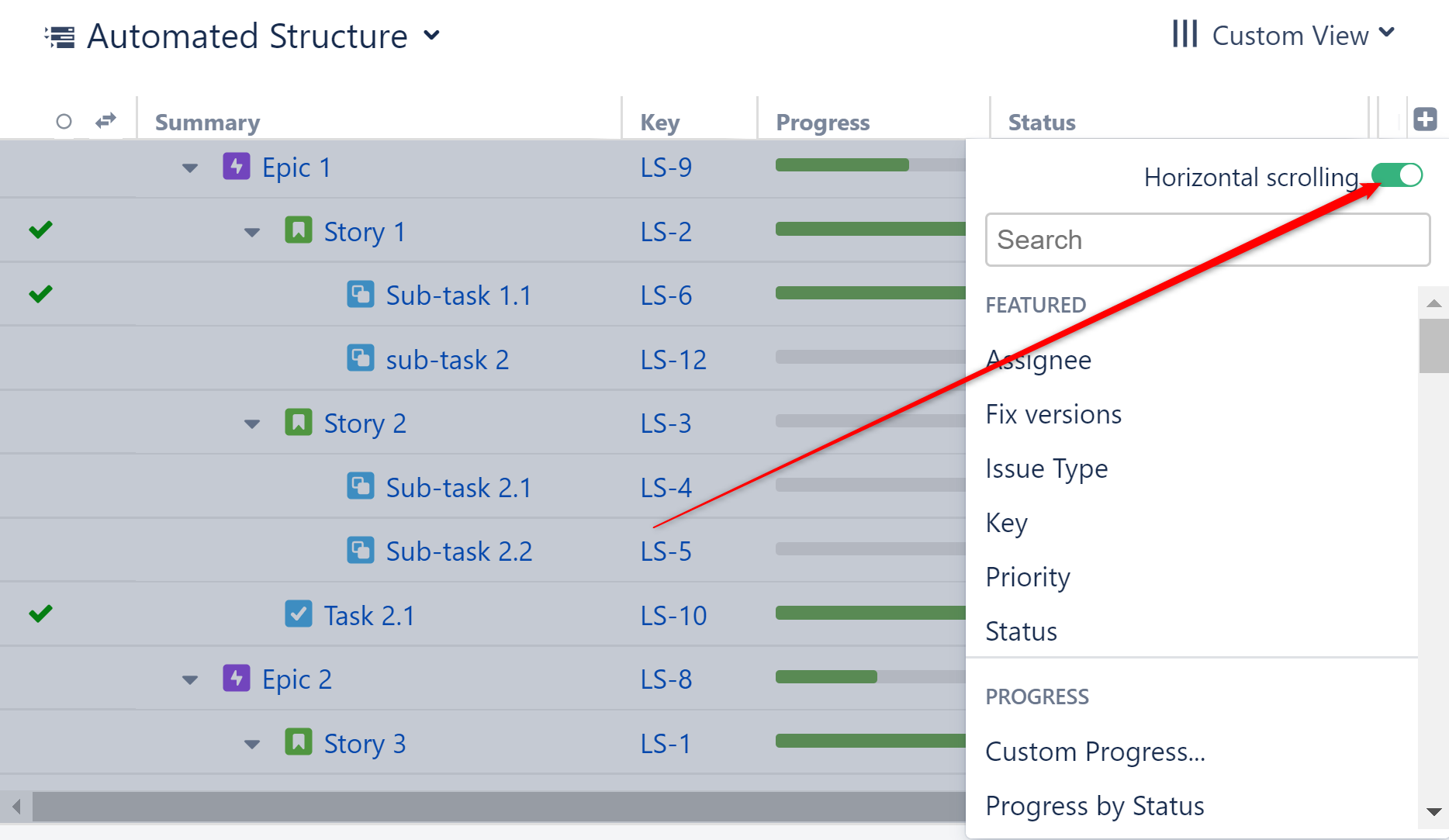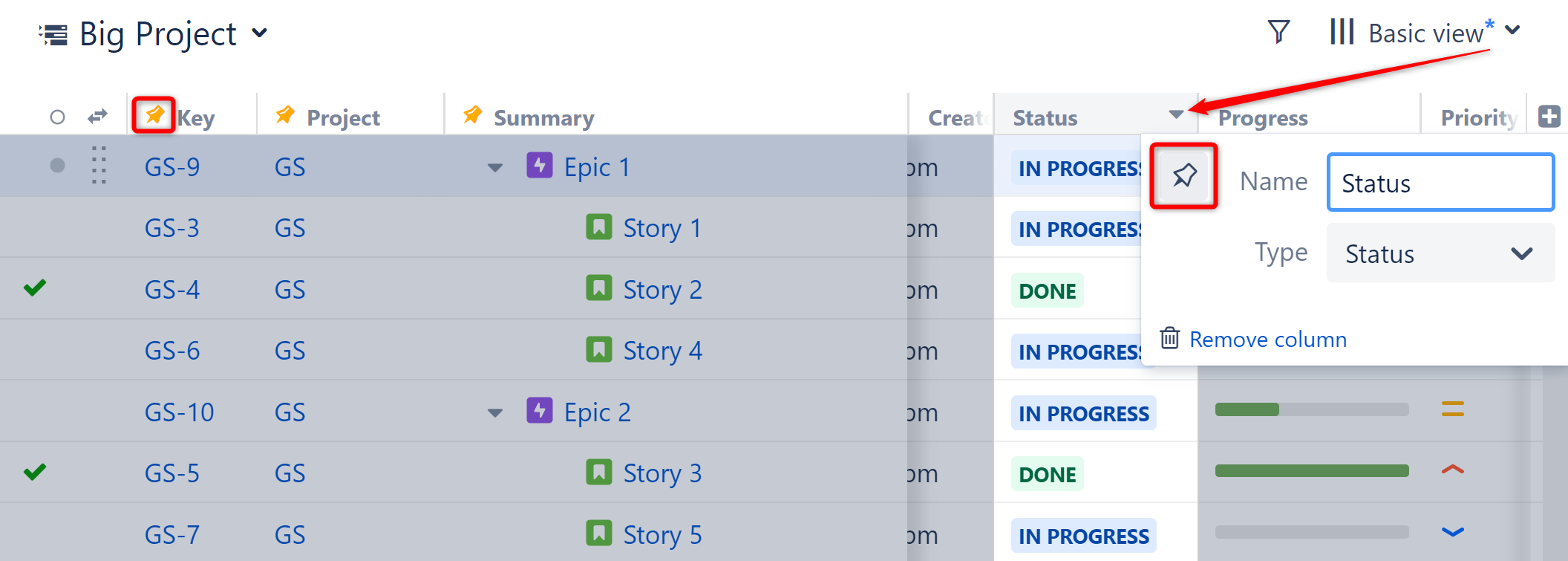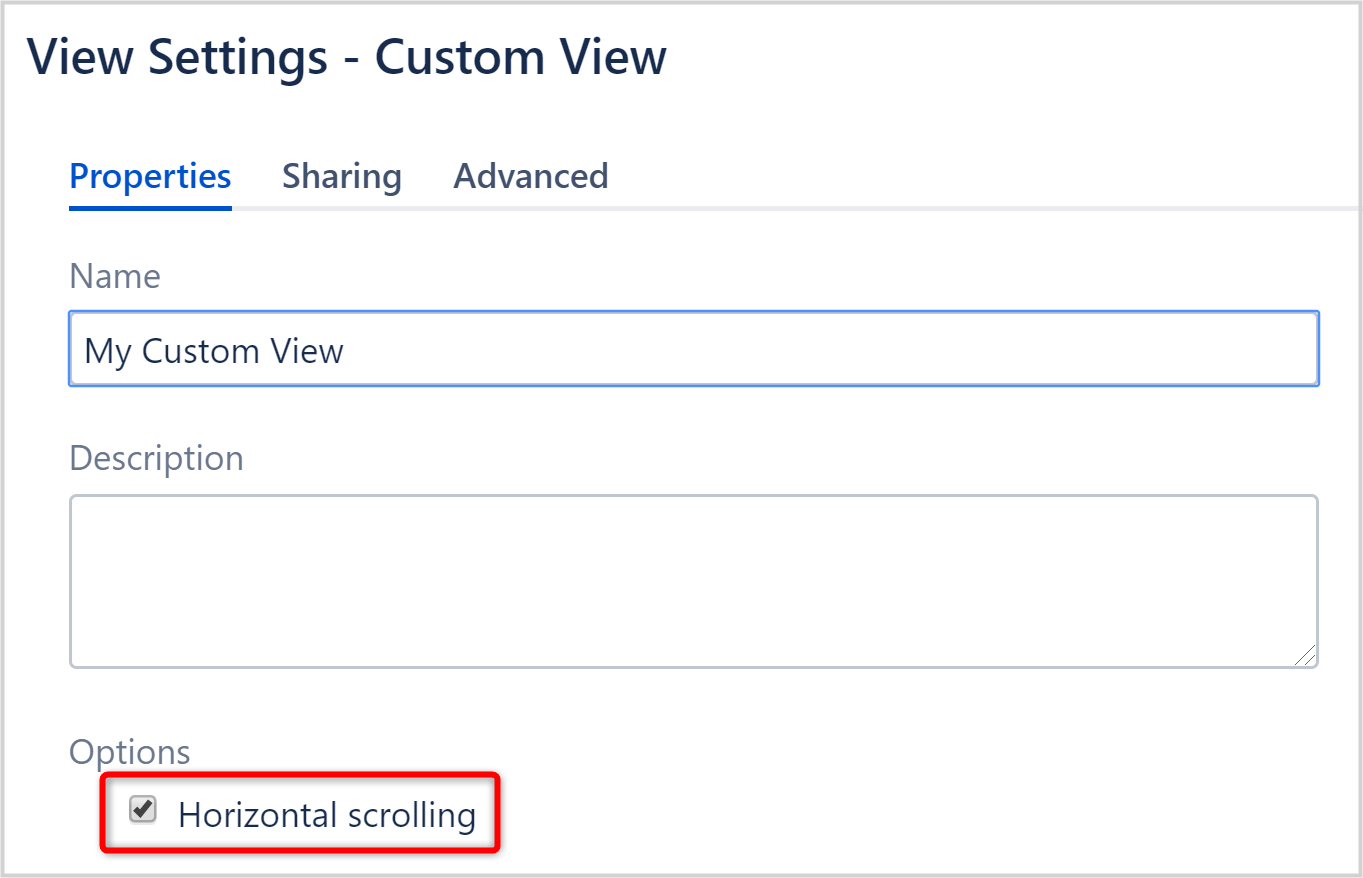
By default, all of your columns are resized to be visible within the Structure panel. To make it easier to work with multiple columns or larger columns, you can turn on horizontal scrolling. This will allow you to work with as many columns as you need and set their sizes as large as necessary for easy viewing.

To enable horizontal scrolling:
Once you turn horizontal scrolling on, your view may no longer fit within the viewing panel. In this case, a horizontal scrollbar will appear at the bottom of the panel. Sliding this from left to right will allow you to bring different columns into view.
Not all columns move when you scroll. The Summary column remains visible at all times, so you can keep track of essential information as you focus in on other columns.
To pin additional columns:

Pinned columns will be moved to the left side of the screen and will remain visible as you scroll.
To unpin a column:
Additionally, when Horizontal scrolling mode is turned off, all pinned columns will be moved back to their original positions, when possible.
The Summary column cannot be unpinned. |
Structure allows you to save your horizontal scrolling settings for a particular view.
For example, by default, the Basic View only shows a few essential columns. Keeping horizontal scrolling disabled for this view makes sure all of your essential information is visible at a glance. On the other hand, the Planning view often has several columns and might be easier to scroll through than trying to view all together.
To set your horizontal scrolling preference for a saved view:

You cannot edit system views (Basic, Planning, Tracking, etc.). In order to enable/disable Horizontal scrolling for one of these views, you must create a new view using Save As. See Saving and Sharing Views. |